Abstract
A pseudomonad capable of producing γ-aminobutyric acid (GABA) was isolated from seawater via an enrichment in which glutamate was the sole carbon and nitrogen source. The organism grew optimally at pH 7.3 and at 25°C. Putrescine, alanine, and glucose-nitrate also served as effective growth substrates. The isolate grew poorly on GABA. Cell suspensions of the organism in 0.02 M phosphate buffer (pH 7.6) containing NaCl (19.4 g liter-1) and MgCl2. 6H2O(3 g liter-1) produced GABA from succinic semialdehyde in combination with glutamate or alanine but not from any substrate alone. Little or no GABA was produced with putrescine or glucose-nitrate as substrates. GABA production in the amino acid cosubstrate systems was transitory with optimum levels occurring in the suspension fluid after 3 h of incubation (0.3 and 0.03 mM for glutamate and alanine cosubstrates, respectively). However, yields of GABA in the cell suspension fluid were low, and quantities near that predicted from stoichiometry could be obtained only by extracting cell suspensions with methanol. GABA release in the suspension fluid was increased with higher pH or by decreasing NaCl. Substitution of the salt by the equivalent Tris-HCl or KCl likewise resulted in increased GABA release. When nigericin (10 μg ml-1) was added to cell suspensions in which NaCl was not decreased, GABA release increased in a way similar to that observed in suspensions with decreased NaCl. The ionophore also decreased GABA uptake by cell suspensions of GABA-grown cells, and the effect was duplicated by lowering NaCl in cell suspensions. The results indicate a role for an Na+-dependent transport system in GABA release.
Full text
PDF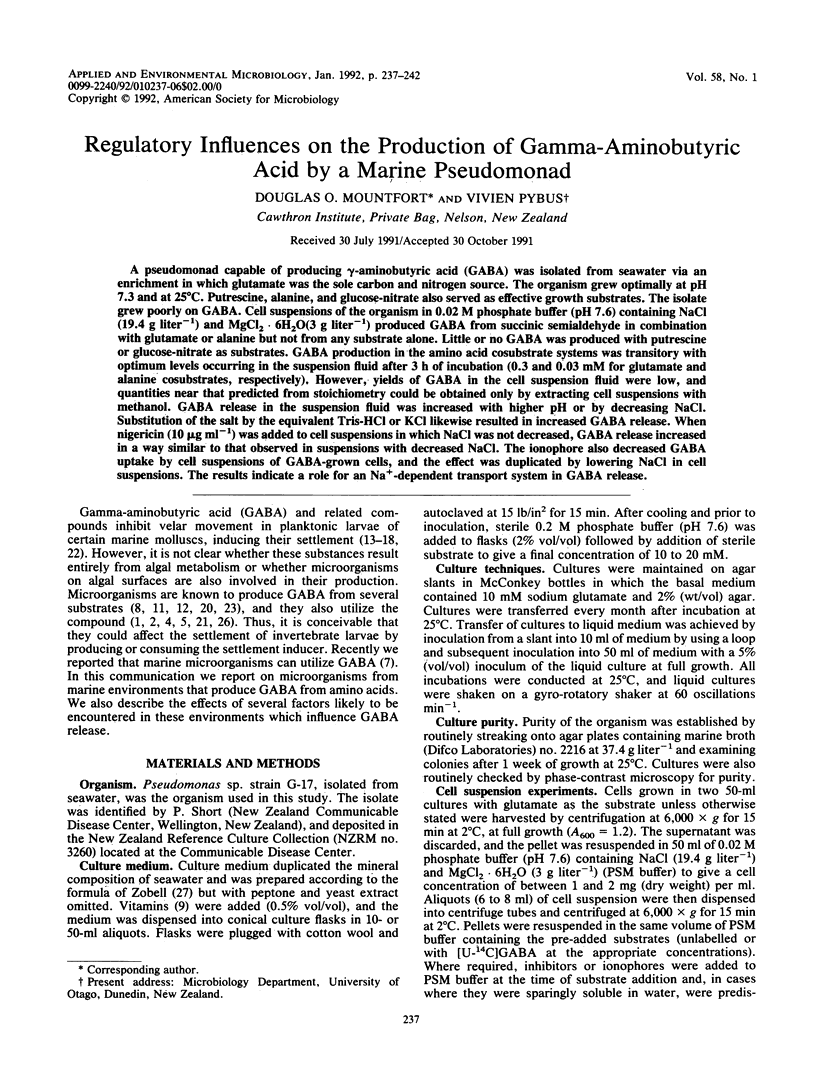
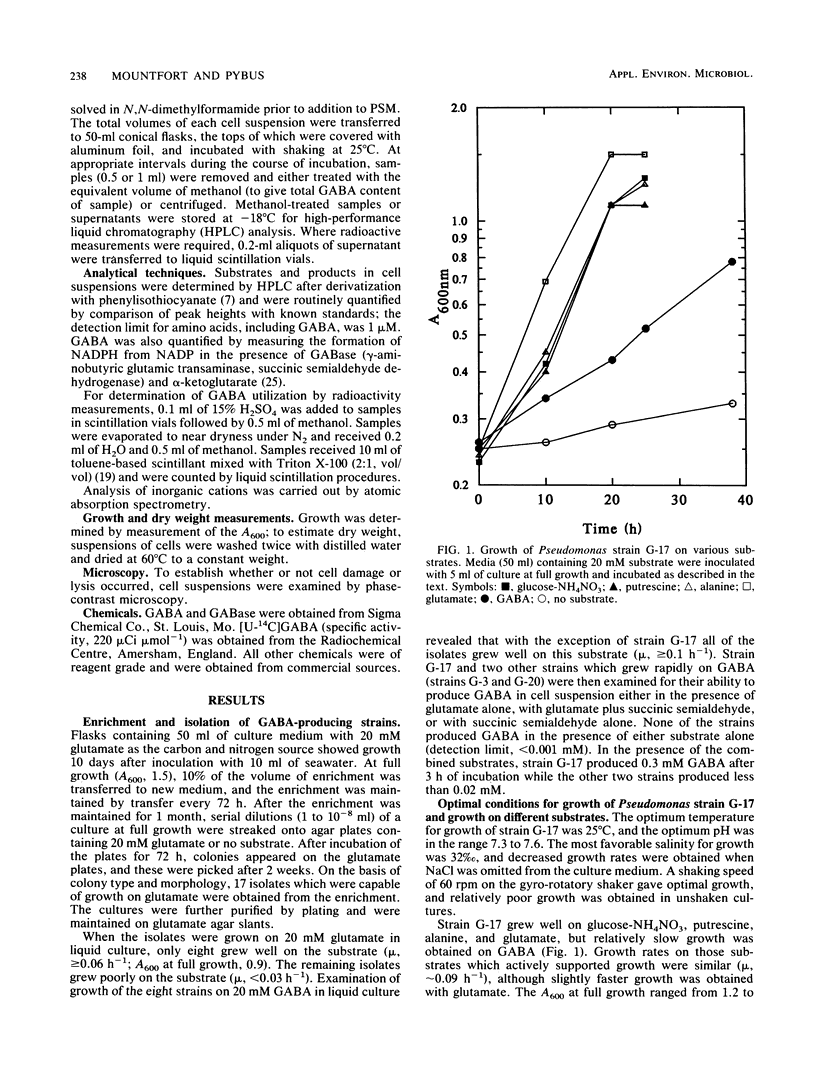
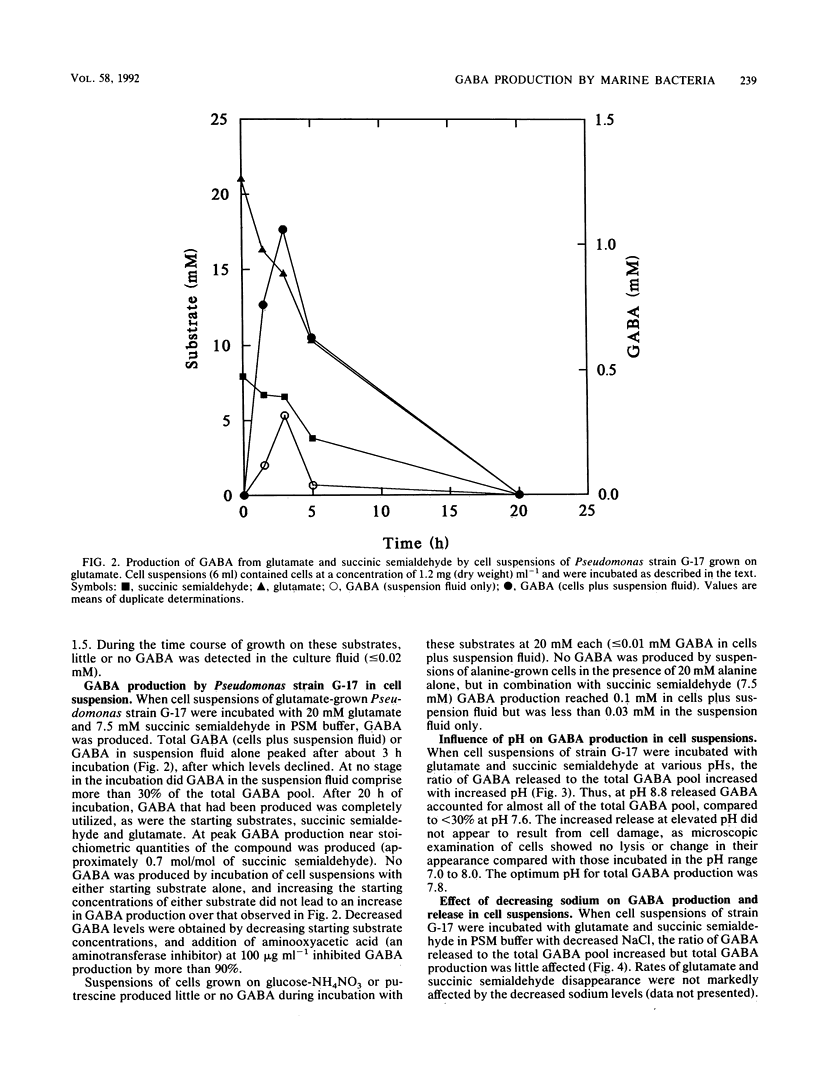
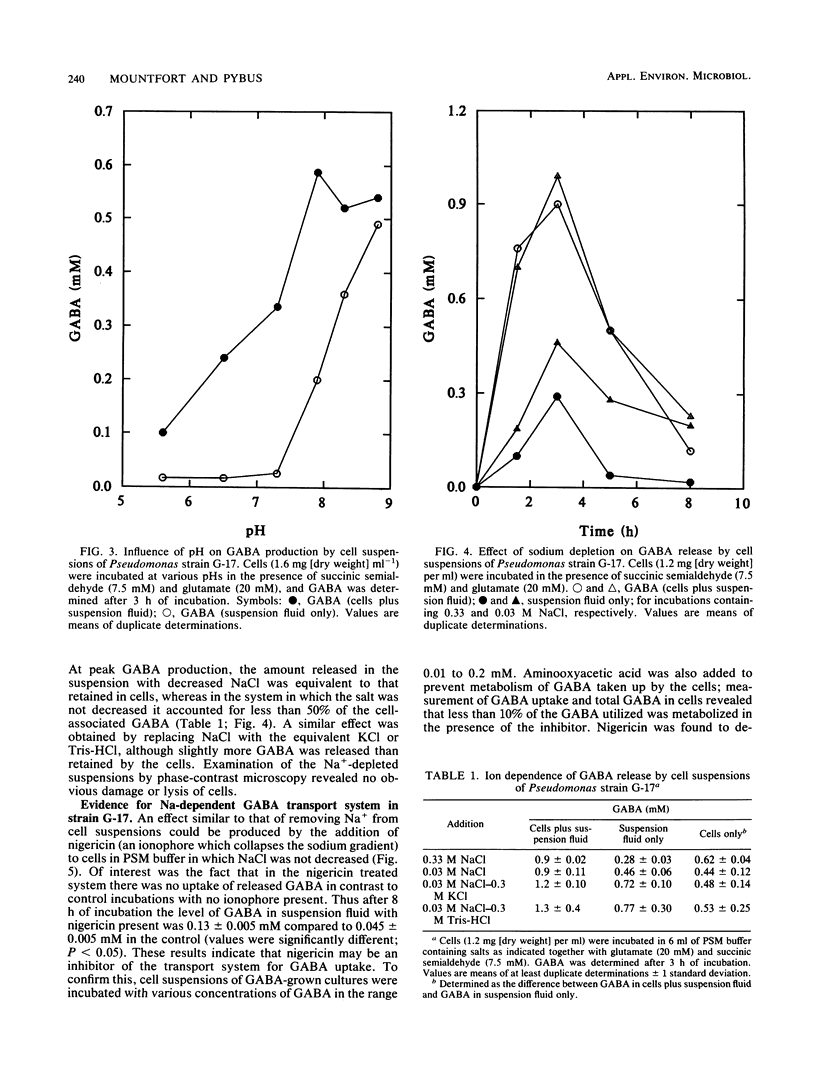
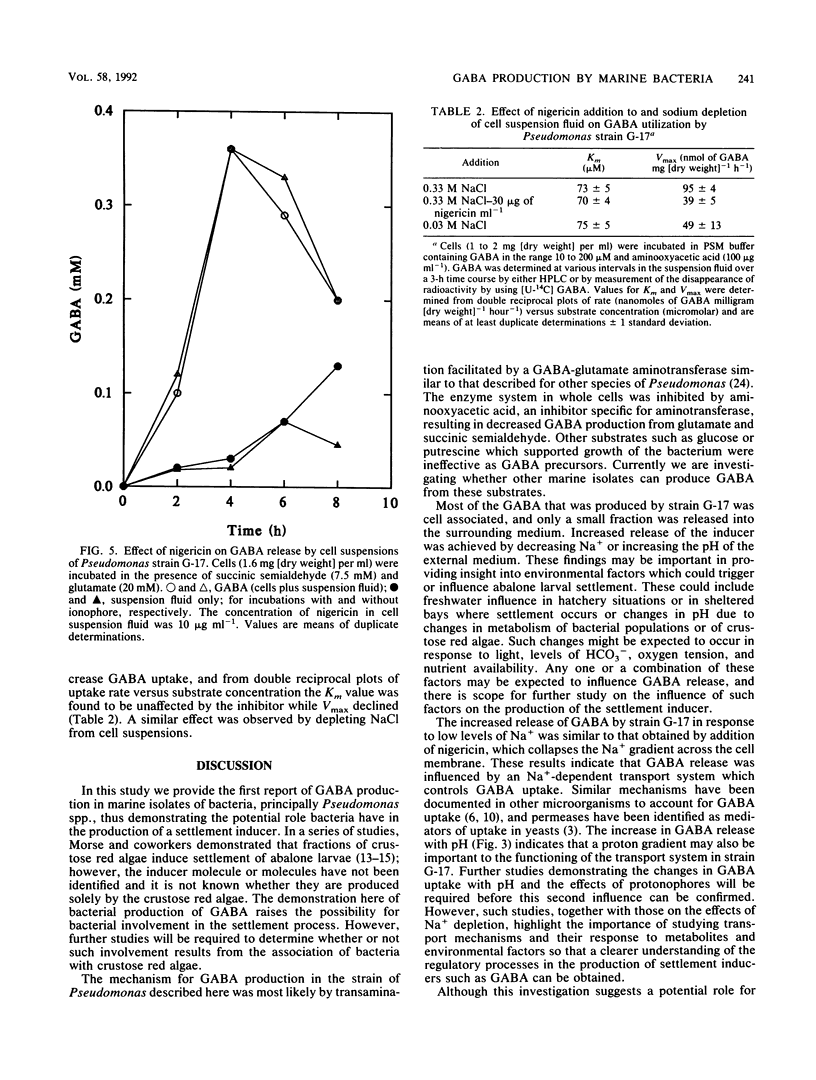
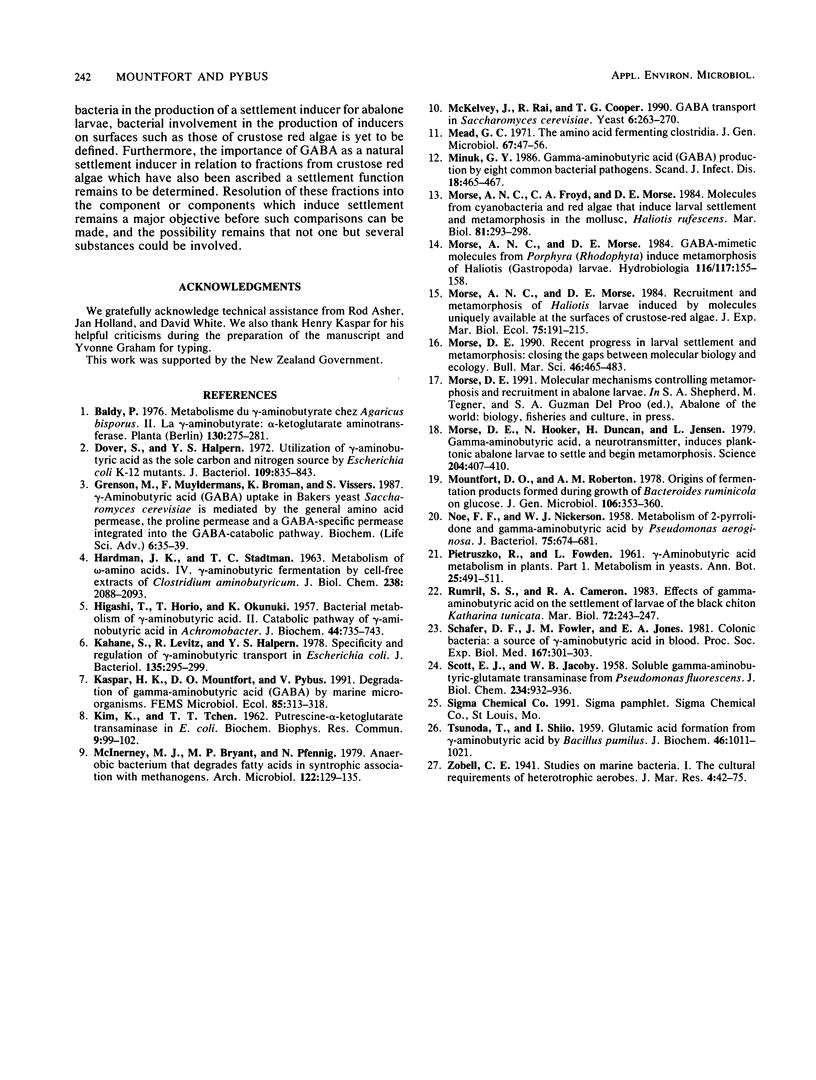
Selected References
These references are in PubMed. This may not be the complete list of references from this article.
- Dover S., Halpern Y. S. Utilization of -aminobutyric acid as the sole carbon and nitrogen source by Escherichia coli K-12 mutants. J Bacteriol. 1972 Feb;109(2):835–843. doi: 10.1128/jb.109.2.835-843.1972. [DOI] [PMC free article] [PubMed] [Google Scholar]
- HARDMAN J. K., STADTMAN T. C. Metabolism of omega-amino acids. IV. gamma Aminobutyrate fermentation by cell-free extracts of Clostridium aminobutyricum. J Biol Chem. 1963 Jun;238:2088–2093. [PubMed] [Google Scholar]
- KIM K. H., TCHEN T. T. Putrescine--alpha-ketoglutarate trans-aminase in E. coli. Biochem Biophys Res Commun. 1962 Sep 25;9:99–102. doi: 10.1016/0006-291x(62)90095-5. [DOI] [PubMed] [Google Scholar]
- Kahane S., Levitz R., Halpern Y. S. Specificity and regulation of gamma-aminobutyrate transport in Escherichia coli. J Bacteriol. 1978 Aug;135(2):295–299. doi: 10.1128/jb.135.2.295-299.1978. [DOI] [PMC free article] [PubMed] [Google Scholar]
- McKelvey J., Rai R., Cooper T. G. GABA transport in Saccharomyces cerevisiae. Yeast. 1990 May-Jun;6(3):263–270. doi: 10.1002/yea.320060311. [DOI] [PubMed] [Google Scholar]
- Mead G. C. The amino acid-fermenting clostridia. J Gen Microbiol. 1971 Jul;67(1):47–56. doi: 10.1099/00221287-67-1-47. [DOI] [PubMed] [Google Scholar]
- Minuk G. Y. Gamma-aminobutyric acid (GABA) production by eight common bacterial pathogens. Scand J Infect Dis. 1986;18(5):465–467. doi: 10.3109/00365548609032366. [DOI] [PubMed] [Google Scholar]
- Morse D. E., Hooker N., Duncan H., Jensen L. ggr-Aminobutyric Acid, a Neurotransmitter, Induces Planktonic Abalone Larvae to Settle and Begin Metamorphosis. Science. 1979 Apr 27;204(4391):407–410. doi: 10.1126/science.204.4391.407. [DOI] [PubMed] [Google Scholar]
- Mountfort D. O., Roberton A. M. Origins of fermentation products formed during growth of Bacteroides ruminicola on glucose. J Gen Microbiol. 1978 Jun;106(2):353–360. doi: 10.1099/00221287-106-2-353. [DOI] [PubMed] [Google Scholar]
- NOE F. F., NICKERSON W. J. Metabolism of 2-pyrrolidone and gamma-aminobutyric acid by Pseudomonas aeruginosa. J Bacteriol. 1958 Jun;75(6):674–681. doi: 10.1128/jb.75.6.674-681.1958. [DOI] [PMC free article] [PubMed] [Google Scholar]
- SCOTT E. M., JAKOBY W. B. Soluble gamma-aminobutyric-glutamic transaminase from Pseudomonas fluorescens. J Biol Chem. 1959 Apr;234(4):932–936. [PubMed] [Google Scholar]
- Schafer D. F., Fowler J. M., Jones E. A. Colonic bacteria: a source of gamma-aminobutyric acid in blood. Proc Soc Exp Biol Med. 1981 Jul;167(3):301–303. doi: 10.3181/00379727-167-41169. [DOI] [PubMed] [Google Scholar]


